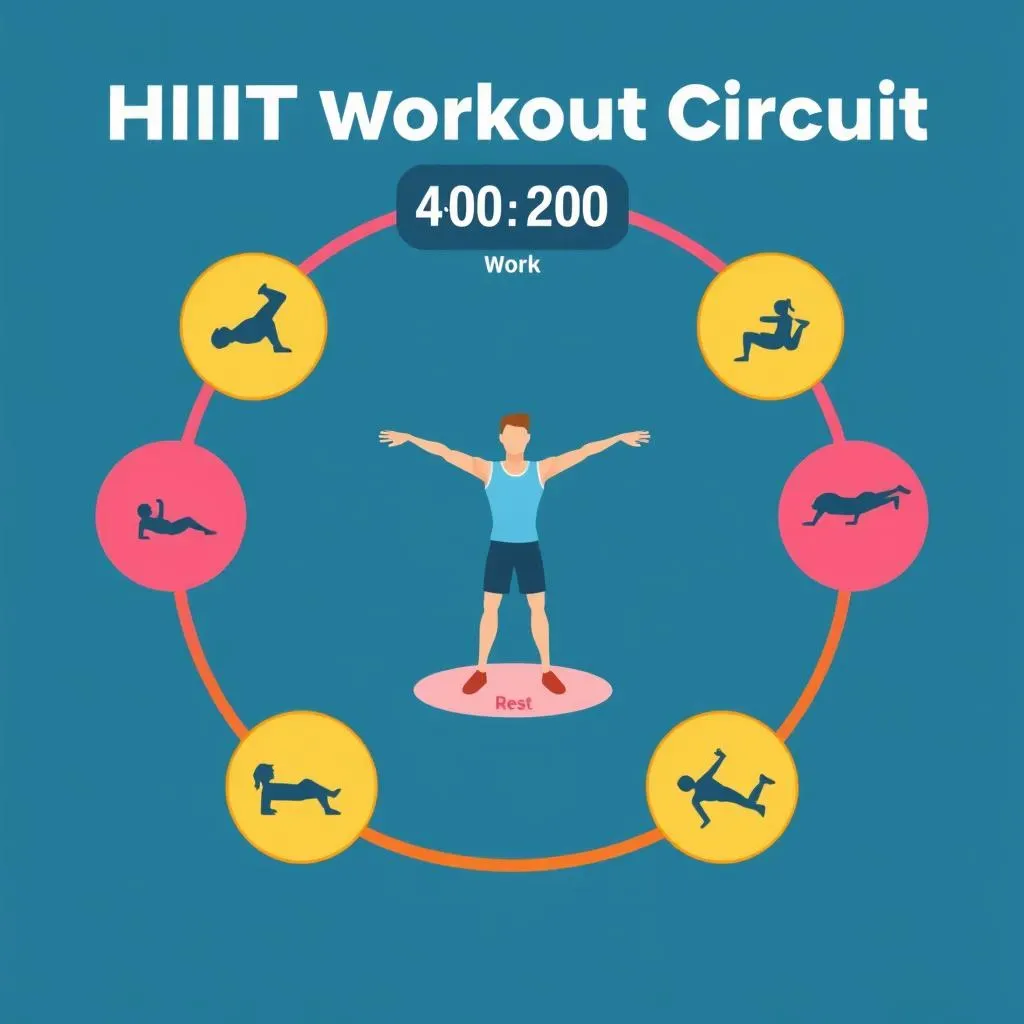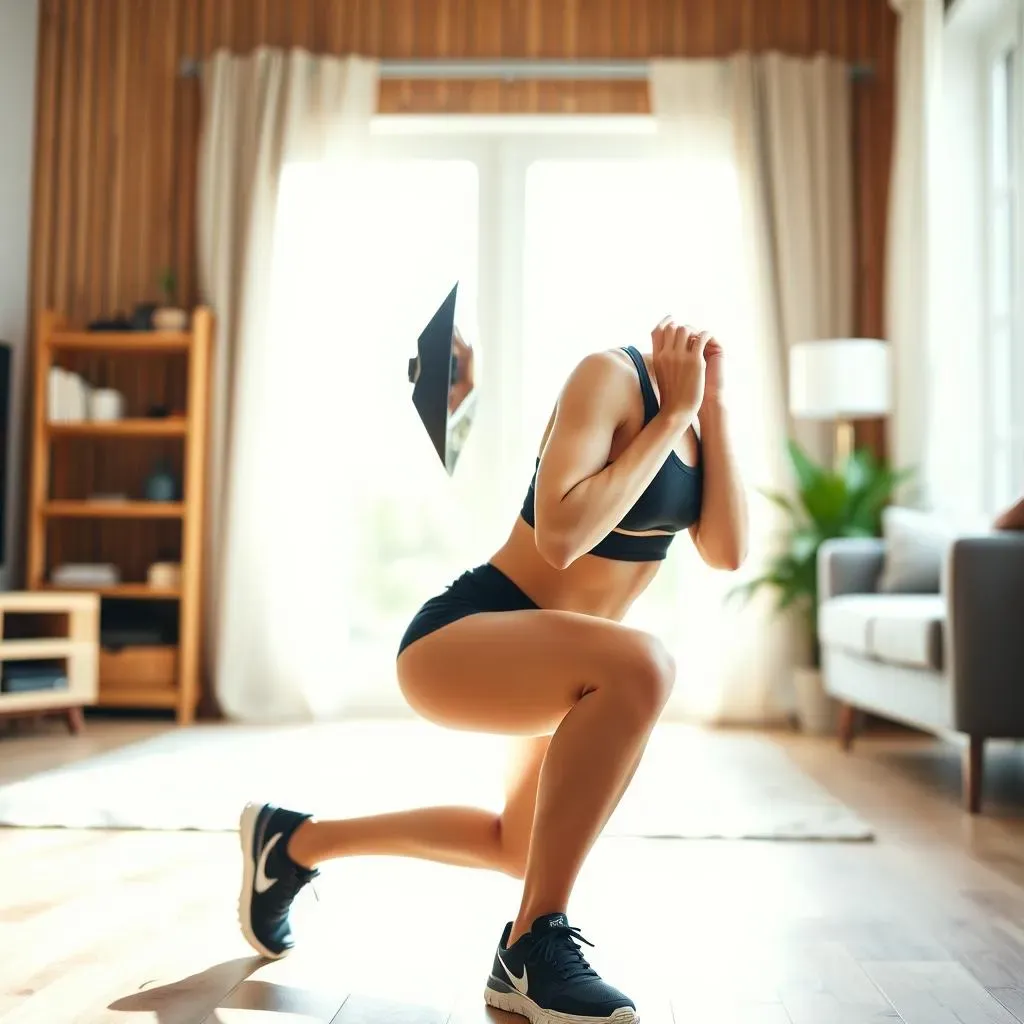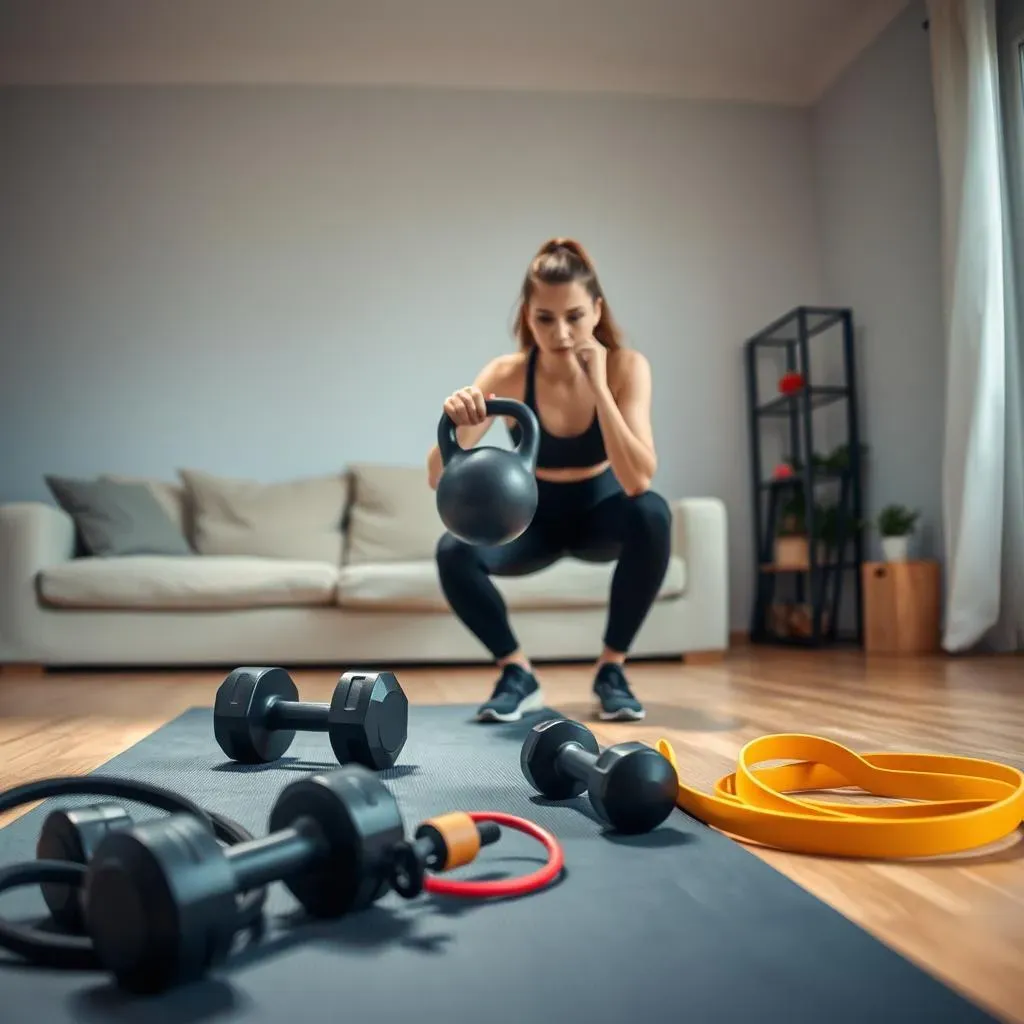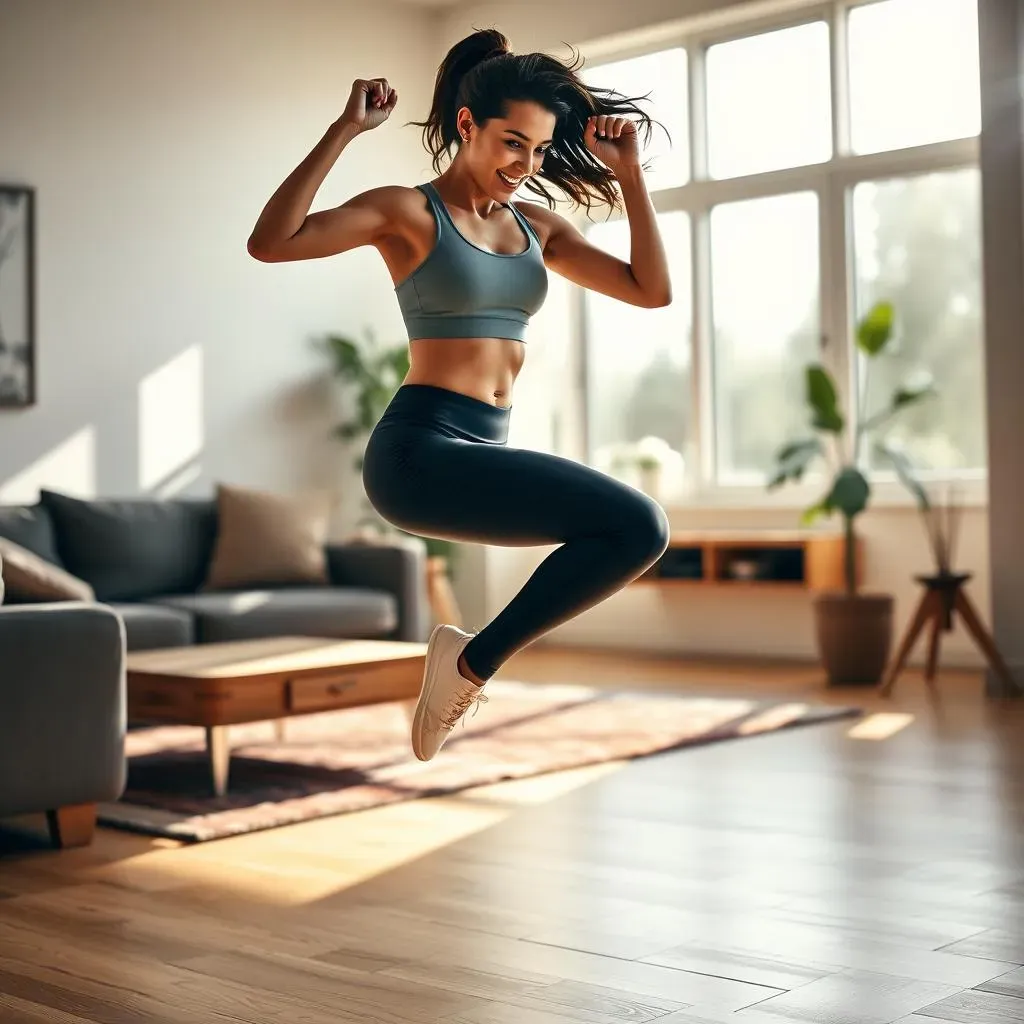Table of Contents
Tired of the same old treadmill slog? Maybe the gym commute eats up too much time, or frankly, you just prefer sweating in your living room without an audience. It's a common story. Finding a workout that's effective, fits your schedule, and doesn't require hauling yourself across town can feel like searching for a unicorn. But what if you could torch calories, build strength, and boost your metabolism in just minutes a day, all without leaving your house?
Why the Best Full Body HIIT Workout at Home Actually Works

Why the Best Full Body HIIT Workout at Home Actually Works
It's All About the Intensity, Not the Scenery
Look, you don't need fancy chrome machines or a spin class instructor yelling inspirational platitudes to get a killer workout. The core principle behind why the best full body HIIT workout at home delivers results is simple: intensity. HIIT stands for High-Intensity Interval Training. That means you're pushing yourself almost to your limit during short bursts of exercise, followed by brief recovery periods. We're talking 80-95% of your maximum heart rate, not just leisurely pedaling while you scroll through TikTok. This kind of effort shocks your system in a way steady-state cardio just doesn't, forcing your body to adapt quickly and efficiently.
Your Metabolism Becomes a Furnace (Even After You Stop)
Beyond the immediate calorie burn (which is significant, by the way), one of the coolest things about the best full body HIIT workout at home is the afterburn effect. This isn't some mythical creature; it's Excess Post-exercise Oxygen Consumption, or EPOC if you want to sound smart. Basically, because you worked so hard, your body needs extra oxygen and energy to return to its resting state. This means you keep burning calories at a higher rate for hours after you finish your workout. Think of it as getting paid overtime for your effort. Plus, consistently challenging your muscles and cardiovascular system this way helps improve insulin sensitivity and can lower blood pressure, making it a smart move for overall health, not just aesthetics.
- Shorter workout times, bigger impact.
- Boosts metabolism long after you're done.
- Improves cardiovascular health efficiently.
- Can be done anywhere, no gym required.
- Prevents workout boredom with variety.
Crafting Your Best Full Body HIIT Workout at Home Structure

Crafting Your Best Full Body HIIT Workout at Home Structure
Getting Down to Brass Tacks: Ratios and Rounds
Alright, so you're sold on the intensity. Great. Now, how do you actually build your Crafting Your Best Full Body HIIT Workout at Home Structure? It's not just random flailing for a few minutes. The magic is in the ratio of work to rest. Think of it like this: you push hard for a set amount of time or reps, then you take a *short* break to recover just enough to go hard again. Common ratios range from 1:1 (like 30 seconds work, 30 seconds rest) to 2:1 (like 40 seconds work, 20 seconds rest), or even higher intensity with shorter rest like 3:1 (like 45 seconds work, 15 seconds rest). The goal isn't full recovery; it's just enough to hit that high intensity again in the next interval. You'll string together several exercises targeting different major muscle groups – squats, push-ups, lunges, burpees, core work – to hit that full body aspect within one circuit, and then repeat that circuit a few times.
- Choose 4-8 full body exercises.
- Decide on your work-to-rest ratio (e.g., 40 seconds work / 20 seconds rest).
- Perform exercises back-to-back for one round.
- Rest for 60-90 seconds after completing a full round.
- Repeat for 3-5 rounds depending on time and fitness level.
Example: Your First Best Full Body HIIT Workout at Home (No Gear Needed)

Example: Your First Best Full Body HIIT Workout at Home (No Gear Needed)
Starting Simple: Bodyweight is Your Best Friend
so you're ready to give this whole best full body HIIT workout at home thing a shot, but you don't have a single dumbbell or resistance band lying around? Perfect. You don't need 'em. Your own body weight is a surprisingly effective tool for building strength and driving up that heart rate when you use it correctly. Think about it: squats, push-ups, lunges, planks – these are fundamental movements that hit major muscle groups. Stringing these together with minimal rest forces your body to work hard and adapt. It's raw, it's effective, and it requires exactly zero specialized equipment, just a bit of floor space and your willingness to push.
The "Get It Done" Circuit Example
Let's build a simple, no-excuses circuit. We'll pick four exercises that cover lower body, upper body, and core. Remember that work-to-rest ratio we talked about? Let's go with a classic 40 seconds of work followed by 20 seconds of rest. You'll do one exercise for 40 seconds, rest for 20, move to the next exercise for 40 seconds, rest for 20, and so on. Once you complete all four exercises, that's one round. Take a slightly longer break after the round, maybe 60-90 seconds, then hit it again. Aim for 3-4 rounds to start. This structure keeps the intensity high and hits your entire body efficiently.
- Exercise 1: Squats (Hands behind head or extended forward)
- Exercise 2: Push-ups (On knees or toes, focus on form)
- Exercise 3: Reverse Lunges (Alternating legs each rep)
- Exercise 4: Plank Jacks (Modify with simple plank taps if needed)
Executing with Intent: It's Not Just Going Through Motions
Look, doing the exercises is one thing, but doing them with intensity is what makes this the best full body HIIT workout at home. During those 40 seconds of work, you should be moving with purpose and speed, while maintaining decent form. Don't just casually squat; explode up. Don't just hold a plank; actively engage your core. The 20 seconds of rest isn't for checking your phone; it's just enough time to catch your breath before the next push. If you finish an exercise and feel like you could immediately do another set, you probably weren't working hard enough. Pay attention to how your body feels, push your limits safely, and focus on making each repetition count within the time frame.
Taking Your Home HIIT Up a Notch: Adding Simple Equipment

Taking Your Home HIIT Up a Notch: Adding Simple Equipment
Why Add Gear? Because Progression Matters
bodyweight only is a solid starting point for finding your best full body HIIT workout at home rhythm. But let's be real, your body gets smart. It adapts. If you keep doing the same moves with the same resistance (your body weight), you'll eventually hit a plateau. Adding even simple, inexpensive equipment introduces new challenges and allows for progressive overload – essentially, making things harder over time so you keep getting stronger and fitter. This isn't about turning your living room into a commercial gym; it's about strategically increasing the intensity and variety to keep those results coming.
Think of it as leveling up. Bodyweight squats are great, but holding a dumbbell or kettlebell dramatically changes the load on your legs and core. Push-ups are effective, but adding resistance bands or elevating your feet ramps up the difficulty. Simple tools open up a whole new world of exercise variations, hitting your muscles from different angles and ensuring your home HIIT sessions stay anything but boring. It forces your body to work harder, recruits more muscle fibers, and ultimately, drives better results.
Simple Tools, Big Impact on Your Home HIIT
So, what kind of gear are we talking about? You don't need a squat rack or a cable machine. A few key pieces can make a massive difference in your best full body HIIT workout at home routine. A set of dumbbells (adjustable ones are great for saving space and varying weight), a kettlebell, resistance bands (loops and long ones), and maybe a jump rope are more than enough to build incredibly effective workouts. These aren't massive investments, and they tuck away easily.
How do you use them? Swap out bodyweight squats for goblet squats with a kettlebell. Add dumbbell rows after your push-ups. Use resistance bands for glute bridges or overhead presses. Incorporate jump rope intervals for cardio bursts between strength exercises. The beauty is you can mix and match. A workout might be 60% bodyweight, 40% with dumbbells. This keeps the workouts fresh, challenging, and ensures you're constantly pushing your limits within that high-intensity framework.
- Dumbbells (versatile for squats, rows, presses)
- Kettlebell (excellent for swings, goblet squats, carries)
- Resistance Bands (add tension to bodyweight moves, great for glutes and shoulders)
- Jump Rope (classic high-intensity cardio)
- Workout Mat (saves your knees and wrists)
Beyond the Bursts: Recovery and Consistency for Home HIIT Success

Beyond the Bursts: Recovery and Consistency for Home HIIT Success
Beyond the Bursts: Recovery and Consistency for Home HIIT Success
Alright, you've crushed that high-intensity interval session. You're sweaty, maybe a little shaky, and that "afterburn" is definitely kicking in. But here's the thing: the workout itself is only half the battle. The real magic, the adaptation, the getting fitter part, happens when you're *not* working out. It happens during recovery. Ignoring this is like trying to build a house without letting the cement dry; you're just setting yourself up for injury, burnout, and zero progress. Consistency is the other non-negotiable. You can do the most perfect, scientifically-backed best full body HIIT workout at home once, but if you don't stick with it, you won't see lasting change. It's not about being perfect every day, it's about showing up regularly, allowing your body to recover properly between sessions, and making it a sustainable part of your life.
Your Home Gym Awaits: Final Thoughts on Full Body HIIT
So, there you have it. The idea that you need a fancy gym or hours of free time for a serious workout is largely a myth. The best full body HIIT workout at home is less about expensive equipment and more about commitment to those intense intervals. You've seen why it's effective, how to build a session, and have a few starting points. The science backs it up, and the convenience is undeniable. Consistency, pushing hard when the timer's on, and allowing for recovery are the real keys. Stop scrolling for the 'perfect' plan and just start sweating. Your living room is ready when you are.
